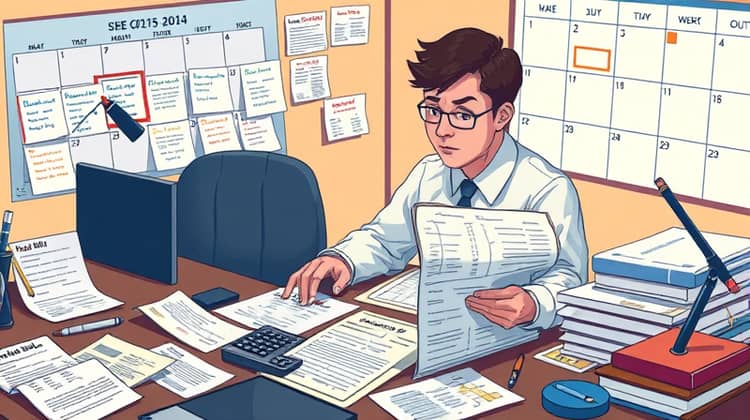Medical Debt Management: 5 Steps to Regain Financial Control

Managing medical debt can be an overwhelming experience, especially as healthcare costs continue to rise. Many individuals and families find themselves navigating the complexities of bills, insurance claims, and unexpected medical expenses. This article will provide a structured approach to managing medical debt, outlining five practical steps to regain financial control and provide a sense of relief to those burdened by debt.
The first step involves conducting a comprehensive debt assessment to understand the full scope of what is owed, including any discrepancies that may arise during the billing process. Once you have a clear picture of your debts, you can effectively challenge any billing irregularities that may inflate your financial obligations unjustly.
Far too often, patients are unaware of their rights and the potential for negotiating their medical bills. By exploring various debt relief options, consumers can identify viable solutions that can alleviate some of the financial strain they experience, paving the way for a more sustainable financial plan and improved peace of mind.
1. Realize a Comprehensive Debt Assessment

Begin your journey by performing a complete assessment of all medical debts. This will involve gathering various statements from healthcare providers, insurance companies, and any reminders from debt collection agencies. By compiling this information, you can gain insight into what you owe and to whom.
Next, it's essential to review each bill in detail. Mistakes in billing are common, and identifying these can significantly impact the total amount you owe. Ensure that the services billed were provided and check for any duplicate charges or services that should have been covered by insurance.
Once you have a clear understanding of your debts, organize them by priority and due dates. This will help you focus on settling the most urgent debts first while having a sense of control over your financial responsibilities.
- Gather all medical bills and statements
- Review each bill for accuracy
- Organize debts by priority and due date
This comprehensive assessment will set the foundation for your financial strategy going forward. Understanding your debt situation clearly means you're better equipped to address and challenge any inaccuracies that may arise.
2. Investigate and Challenge Billing Irregularities

Billing irregularities can sometimes lead to inflated medical debts that are unnecessary. It is vital to carefully scrutinize each bill for any errors or inconsistencies that could be contested. This could save you a significant amount of money and help reduce your overall debt burden.
- Check for incorrect procedure codes
- Investigate unexpected charges
- Ensure all billed services are necessary
Being proactive in challenging these irregularities can not only provide immediate financial relief but can also serve as a pivotal point in the negotiation process with providers and insurers.
3. Investigate and Challenge Billing Irregularities

Continuing from our previous point, once you've identified billing discrepancies, the next phase is to reach out to the billing departments of the relevant healthcare providers. Be prepared to provide evidence and documentation backing your claims, such as explanation of benefits (EOB) from your insurer or itemized bills showing unjust fees.
Additionally, keeping thorough documentation not only assists in challenging discrepancies but also supports you in negotiating payment terms. If a provider is not responsive, do not hesitate to reach out to a financial advisor who can help advocate on your behalf, potentially lowering your debt significantly.
Staying persistent and organized throughout this process can yield positive results and may lead to reduced bills or even financial assistance, making the pathway to financial control that much clearer.
4. Explore Debt Relief Options

Once you've navigated through the first two steps, it's time to explore available debt relief options that can ease your financial burden. Various avenues can provide relief from overwhelming medical debts, allowing you to focus on recovery rather than financial stress.
Some relief options may include negotiating payment plans with healthcare providers, enrolling in financial assistance programs, or looking into medical credit cards designed to cover healthcare costs with flexible repayment terms.
- Negotiate with healthcare providers for lower payment amounts
- Apply for financial assistance programs
- Consider medical credit options
It's crucial to evaluate each option carefully and select the ones that best fit your financial situation. Remember, exploring these debt relief strategies is not a one-size-fits-all approach, and tailoring your choices aligns with your specific needs is vital.
5. Implement a Sustainable Financial Plan

After you've managed your medical debts and explored relief options, the final step involves formulating a sustainable financial plan. This should encompass a thorough review of your income, budgetary constraints, and ongoing expenses, all while prioritizing future healthcare costs. An accountable financial plan ensures that you remain aware and prepared for any potential medical expenses.
Creating a budget that accounts for potential medical bills can help prevent you from accruing more debt in the future. Set aside funds specifically for healthcare needs to mitigate the risk of falling into the same financial traps you've navigated previously.
Moreover, regular check-ins on your financial plan can assist in keeping debt in check while allowing you to review spending patterns that may need adjustments. This adaptability will be crucial as your financial landscape changes over time.
Conclusion

In conclusion, managing medical debt requires a proactive and informed approach, but the steps to regain financial control are achievable for anyone willing to put in the effort. By conducting a thorough debt assessment, challenging billing errors, and exploring available relief options, individuals can take significant steps towards financial recovery.
Implementing a sustainable financial plan adds an essential layer of protection against future debt, ensuring that unexpected medical expenses do not derail your budget or financial stability. It’s crucial to be diligent, organized, and persistent throughout this process to see lasting results.
Remember, you are not alone in this journey, and seeking professional guidance may often provide additional support and insights that can further help navigate the complexities of medical debt management.






